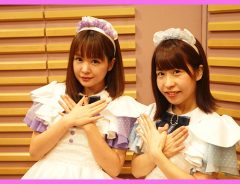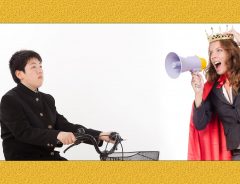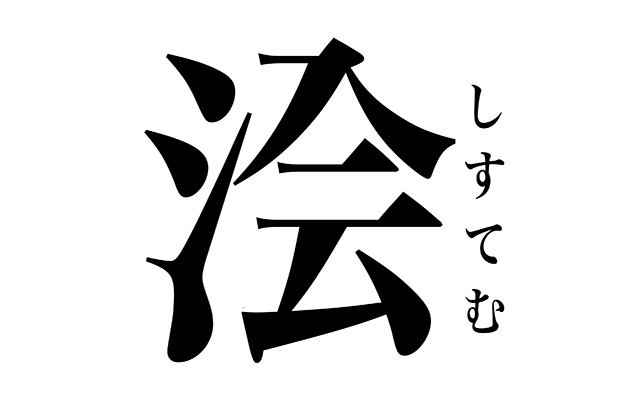- Source:
- @gooohinata
- Tags:
- conjugation / Japanese / Japanese grammar / Japanese language / Kanji / original kanji / system
Related Article
-

A former Danish diplomat released an efficient kanji memorizing software with more features!
-

Fan Trailer Gives Star Wars: A New Hope Old School 80’s Anime Makeover
-

Japan’s Most Beautiful Calligrapher Demonstrates Writing The Most Difficult Kanji
-

Realizing a dream life in Japan: Interview with Jenya, professional voice actress and singer
-

Japanese Voices: @17 no Gokitaku Shimasenka? #25
-

Japanese sign seems to tell people to get off their bike “for the sake of the Queen”



Updated with explanation on similarity to existing kanji
Although some Japanese language textbooks begin to introduce kanji from the earliest chapters, together with hiragana and katakana, the most common approach, especially in countries where Chinese characters are not already used, is to begin with the phonetic syllabaries hiragana and katakana (mostly for loan words and foreign names) and then get into kanji after they have been learned.
This approach, while effective, can sometimes cause frustration among quick learners who are eager to learn kanji. But what if you could already write kanji only using katakana that you've already learned?
Kata-kanji?
A new (fictional) kanji posted by manga artist and writer Gō Ōhinata on his Twitter account earlier this month offers a case in point. Maybe we could call it a "kata-kanji":
With permission from @gooohinata
If you can read the hiragana on the right しすてむ, you'll understand that this kanji is meant to be pronounced "shisutemu," in other words "system." However, if you know your katakana, and if you look carefully at the kanji he created, it may dawn on you that the kanji is actually composed of the katakana for the same word, システム. The シ is stylized in calligraphic style to resemble the water radical 氵 which is often seen on the left side of kanji (such as 汁 shiru in みそ汁 miso-shiru, meaning "miso soup") and the テ and ム katakana share a stroke in common, but other than that, they do not vary from actual katakana letters.
With permission from @gooohinata
Some of our readers familiar with simplified Chinese characters may think they recognize the existing kanji 浍 (kuai4) here. While very similar, in Gō Ōhinata's kanji, the 旁 tsukuri (right side of the kanji) has an 入頭 irigashira (crown formed from the 入 kanji) and not a 人頭 hitogashira (crown formed from the 人 kanji) as is found in 浍.
Whereas the image above is appropriate for beginners, the next image Mr. Ōhinata posted is perhaps more suited to advanced beginners who are familiar with verb conjugations.
With permission from @gooohinata
Although this still says "shisutemu," the む is a verb ending. In other words, he imagined it as a verb ending in -mu similar to verbs such as 読む "yomu" (to read) or 飲む "nomu" (to drink). This would be like saying: "To system."
Of course, if his kanji could be used in a verb, the next logical step was to imagine how it would be conjugated in all of its forms and endings, following the conventional rules of Japanese grammar.
With permission from @gooohinata
This is more suited to advanced learners, but we thus have: "Shistemanai" (I don't system [irrealis form]), "shistemou" (Let's system [irrealis form]), "shisutemimasu" (I system [continuative form]), "shistemu" (see above [terminal form]), "shisutemu toki" (When I system [attributive form]), "shistemeba" (If I system [hypothetical form]), and "shisuteme" (System! [imperative form]).
Other kata-kanji
Mr. Ōhinata also posted a few more humorous examples of his kanji creations composed of katakana.
Can you guess the meaning of these?
With permission from @gooohinata
Hint: Japanese baseball
With permission from @gooohinata
Hint: horny
.
..
...
....
.....
......
.......
Here are the answers:
With permission from @gooohinata
おりっくす (hiragana) オリックス (katakana): Orix, short for the Orix Blue Wave, the Japanese baseball team where Ichiro spent nine seasons of his Japanese professional career. This was a bit tricky because the ク and ス share a stroke in the middle.
With permission from @gooohinata
えっち (hiragana) エッチ (katakana): This is a word with a convoluted background, perhaps as a way to create a euphemism for a naughty term. The Japanese word hentai 変態, originally meaning "pervert" or "perversion," when transliterated into English, begins with the letter "H," which is pronounced エッチ in Japanese.
The チ katakana is normally written with a vertical stroke which curves to the left at the bottom, but in this kanji, it was written to resemble the kanji 千 sen, meaning "thousand" (which is also the name which Yubaba gives Chihiro in Spirited Away).
(Please note that the kanji above are fictional creations by Mr. Ōhinata and are not included in any dictionary. It's only for fun.)
Make your own kanji and win a prize!
If you're interested in making kanji, either only out of katakana like Mr. Ōhinata did or out of new combinations of existing kanji radicals and parts, you may be interested in the 創作漢字コンテスト sōsaku kanji kontesuto (Original Kanji Contest) sponsored by Sankei Shimbun newspaper and The Shirakawa Shizuka Institute of East Asian Characters and Culture at Ritsumeikan University.
If you visit their website, you can see the winning entries of the most recently held 9th contest, and links to archives of earlier contests as well. There's nothing preventing foreign nationals from entering the contest (although you need to write a Japanese address when you submit the application), and if you win, you can collect up to 50,000 JPY in gift coupons for the top prize.